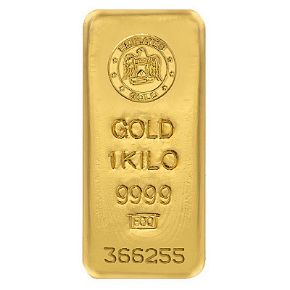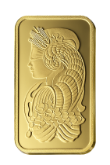
Gold has always been a symbol of wealth and value, making it one of the most sought-after assets in the world. But with its popularity comes the risk of encountering fake or counterfeit gold. If you’re unsure about the authenticity of your gold jewelry, coins, or bars, there’s a simple test you can perform at home using a common household item—vinegar. In this guide, we’ll walk you through the step-by-step process of testing gold at home with vinegar, ensuring you can verify its authenticity without professional tools.
Why Test Gold at Home?
Testing gold at home is a convenient and cost-effective way to verify its authenticity. Whether you’ve inherited gold, purchased it second-hand, or just want to double-check its purity, performing a simple test at home can save you the time and expense of visiting a jeweler. While vinegar is not the most comprehensive test, it is a great starting point for determining whether your gold is real or fake. Plus, it uses a household item that’s readily available, making it an accessible option for everyone.
Is the Vinegar Test Reliable?
The vinegar test is a quick and easy method to check if your gold is genuine. While it’s not as precise as professional testing methods (such as acid tests or X-ray fluorescence machines), it’s an effective way to spot fake gold that’s made from materials like iron, brass, or gold-plated metals. Real gold is resistant to corrosion and chemical reactions, so it won’t be affected by vinegar, while fake gold may show discoloration or other signs of chemical reaction.
What You’ll Need to Test Gold with Vinegar
Before you begin, gather the following materials:
- White Vinegar: Any brand of white vinegar will work, as it’s acidic enough to test the gold’s reaction. Avoid flavored or colored vinegars.
- A Small Container: A bowl or cup to hold the vinegar and the gold item.
- A Soft Cloth: To dry and clean the gold item after testing.
- The Gold Item: Jewelry, coins, or bars you want to test.
Once you have these items, you’re ready to proceed with the test.
Step-by-Step Guide to Testing Gold with Vinegar
Step 1: Inspect the Gold Item
Before using vinegar, inspect your gold item closely. Look for markings or stamps indicating purity, such as “24K,” “18K,” or “999.” These markings provide clues about the item’s authenticity but are not foolproof, as counterfeit gold can also be stamped.
Step 2: Clean the Gold Item
Ensure your gold item is clean and free of dirt, oil, or other substances that might interfere with the test. Rinse it with water and pat it dry with a soft cloth.
Step 3: Prepare the Vinegar Test
Fill a small container with white vinegar. Make sure there’s enough vinegar to completely submerge the gold item.
Step 4: Submerge the Gold in Vinegar
Place the gold item into the container of vinegar, ensuring it’s fully submerged. Let it sit in the vinegar for about 15–20 minutes. Avoid agitating or stirring the vinegar during this time.
Step 5: Observe the Reaction
After 15–20 minutes, remove the gold item from the vinegar and observe any changes. Real gold will remain unaffected—it won’t tarnish, corrode, or change color. If the gold item turns green, black, or shows any signs of reaction, it’s likely fake or gold-plated.
Step 6: Rinse and Dry
Rinse the gold item thoroughly with water to remove any vinegar residue. Dry it with a soft cloth and inspect it once more to confirm the results.
What Do the Results Mean?
- No Reaction: If the gold item shows no signs of discoloration or damage, it’s likely genuine gold. Keep in mind, however, that the vinegar test doesn’t indicate the purity of the gold.
- Color Change or Tarnishing: If the gold item changes color, turns green, or shows signs of tarnish, it’s likely fake or made from base metals.
Limitations of the Vinegar Test
While the vinegar test is a convenient way to check if gold is real, it has its limitations. For instance:
- Doesn’t Measure Purity: The test can’t tell you whether the gold is 24K, 18K, or a lower karat. It only indicates whether the item is genuine gold or not.
- May Not Detect Gold-Plated Items: Vinegar may not always react with gold-plated items, especially if the plating is thick.
For a more accurate assessment of your gold’s authenticity and purity, consider additional tests, such as the acid test, density test, or professional testing at a jeweler.
Alternative Ways to Test Gold at Home
If you want to further verify your gold’s authenticity, here are some other methods you can try at home:
- Magnet Test: Real gold is not magnetic, so if your gold item is attracted to a magnet, it’s likely fake.
- Ceramic Scratch Test: Rub the gold item on an unglazed ceramic tile. If it leaves a golden streak, it’s likely real; a black or green streak suggests it’s fake.
- Water Test: Real gold is dense and will sink in water, while fake gold may float or settle slowly.
These methods, combined with the vinegar test, can provide a clearer picture of your gold’s authenticity.
Why Test Gold at Home?
Testing gold at home is not only convenient but also empowering. It allows you to quickly identify counterfeit items and make informed decisions about your purchases or inherited gold. Whether you’re preparing to sell gold, invest in it, or simply satisfy your curiosity, these DIY methods can help you verify its authenticity with confidence.
When to Seek Professional Testing
While home testing methods like the vinegar test are useful, there are times when professional testing is necessary. If you’re dealing with high-value gold items, such as bars or coins, or need an official assessment for selling or insuring your gold, visit a trusted jeweler or precious metals dealer. Professionals use advanced techniques, such as X-ray fluorescence (XRF) or fire assays, to determine gold’s purity and authenticity with precision.
Why the Vinegar Test is Perfect for 2025
As more people turn to gold as a secure and stable investment, the need for quick and reliable home testing methods is growing. The vinegar test offers a simple and accessible way to check gold’s authenticity, especially in a time when counterfeit gold is becoming more sophisticated. By learning how to test gold at home with vinegar, you can protect your investment, save time, and avoid costly mistakes. Whether you’re a seasoned gold collector or a first-time buyer, this DIY method is a valuable tool in your gold-testing arsenal.
NOTE
This Content is the copyrighted content of EE.GOLD. All rights are reserved. You are welcome to share or use our content only by including direct links to our website. Any other form of reproduction, distribution, or use without proper attribution is strictly prohibited.
This Content is intended solely for educational purposes. The information provided does not constitute financial or investment advice.
Please note that Digital Storage Receipt, Secure Storage Solutions, and Physical Gold Sales are the only services offered by EE.GOLD.
We strictly adhere to government regulations and are firmly against all illegal financial or investment activities globally.
For further inquiries, feel free to contact us through our official channels.










.png)

